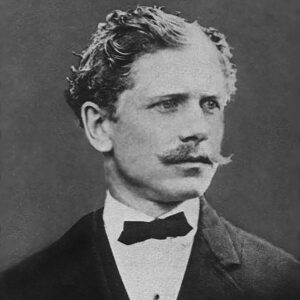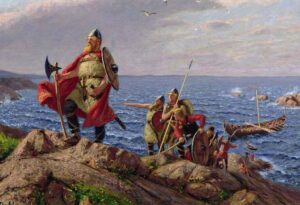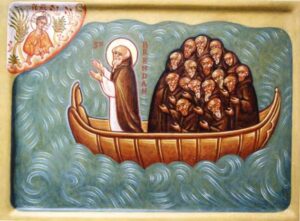It is 1820 and Peru is in chaos. Disaffection with the Spanish colonial authorities has reached a breaking point. The citizens of Lima took to the streets armed with weapons and rage, inspired by revolutionaries Simon Bolivar and Jose de San Martin. Amid the commotion, a secret plan was hatched to smuggle some precious cargo out of the city. This cargo? One of South America’s greatest treasure hoards.
Chests filled with gold, silver, precious jewels, and relics were loaded onto a ship bound for Mexico. However, the treasure vanished somewhere along the route, never to be seen again. To this day, no one knows where this great South American treasure hoard lies.
Background
The story of the Treasure of Lima starts several decades before its disappearance in 1820.
From 1805 to 1814, Napoleon Bonaparte waged war across Europe. His invasion of the Iberian Peninsular in 1807 proved a crushing blow to the Spanish monarchy.

Map of Cocos Island. Photo: Geographical Handbook Series
News of the Spanish defeat, and the subsequent weakening of Spanish authority, soon reached the ears of unsatisfied citizens in South America. Creoles in South America felt ignored. The Spanish limited who they could trade with (Spain alone) and they could not participate politically. Previously, Spanish viceroyalties kept everyone in check. But, eventually, enough was enough.
In 1820, the Argentinian revolutionary Jose de San Martin formed the Liberating Expedition of Peru. He sought to invade and liberate the country from its Spanish oppressors. Upon hearing of San Martin’s march to Lima, Lima’s Spanish viceroy panicked.
Espionage and betrayal
The viceroy compiled a hoard of treasure from Lima to be sent to Mexico. According to a document in a museum in Caracas, Venezuela, the Treasure of Lima included:
- One chest containing altar trimmings, coated with gemstones of up to 1,244 pieces.
- One chest with two gold relic containers, with 624 topaz/carnelians/emeralds, and 12 diamonds.
- One chest containing three relic containers of cast metal, with 860 rubies and 19 diamonds.
- One chest containing 4,000 doubloons, 124 swords, 5,000 crowns of Mexican Gold, 64 daggers, 120 shoulder belts, and 28 round shields.
- One chest containing eight caskets of cedar wood and silver, with 3,840 cut stones and 4,265 uncut stones.
- Seven chests with 22 candelabra in gold and silver.
- One seven-foot solid gold statue of the Virgin Mary with baby Jesus, adorned with 1,684 jewels.
Today, the treasure would be worth an estimated one billion dollars. The viceroy thought it was a good idea to enlist an English captain to transport the haul, as the English had no ties with the revolutionaries. He chose Captain William Thompson, a well-known English captain of the ship the Mary Dear.
The viceroy sent a military guard and a company of Catholic priests to escort the hoard. Unfortunately, Thompson was less than honorable, despite the viceroy paying him handsomely.

Cocos Island, Costa Rica. Photo: Michael Bogner/Shutterstock
Supposedly, Thompson asked his crew: “We can work as we please the rest of our lives, boys, and not all of us together can ever produce for ourselves as much wealth as there is in one of those big boxes. The fellows who hired us to haul this cargo for them are thieves. They stole all this gold. Let’s take it from them and put it to good use! What is the will of the crew?”
The answer seems to have been decisive. Thompson chucked the military men and priests overboard and they chartered a new course to Cocos Island off the coast of Costa Rica.
Treasure Island
Cocos Island is nicknamed “Treasure Island” for a reason. During the 1800s it was a refuge for pirates and a popular hiding spot for their loot. The waters around the island are rough and it has uneven, rugged terrain.
In later years, the island became so notorious among treasure hunters that the Costa Rican government had to ban treasure-hunting activities entirely in 1994 to protect the ecologically significant environment there. While visitors are permitted, only 1,000 or so are allowed per year.
The hunt
Thompson buried the treasure on Cocos Island for safekeeping, but authorities soon caught up with the mutineers. The Spanish hung the entire crew, except for Thompson and his first mate James Forbes. The authorities let them live so that they could reveal the treasure’s location.
However, inept handling of the case meant that Thompson and Forbes escaped into the jungle. The former eventually got onto a ship bound for Canada and the latter made it to California. Thompson passed away without returning to the island and Forbes built a comfortable life for himself in California, passing on tales of the treasure to his family. Forbes wrote down the details of the location and contents, which he passed on to his son. But, attempts at finding it proved futile.
In the 1840s, Thompson revealed the treasure’s location to a man named John Keating, a fellow seaman with whom he became close. Keating visited Cocos Island and found some bits and bobs possibly linked to the Treasure of Lima, such as gold pieces and some jewels. But the vast majority of the hoard was still missing.
German treasure hunter August Gissler became obsessed with finding the Treasure of Lima. Gissler was so committed that he moved to the island from 1889 to 1908. His primary target was the seven-foot golden statue of the Virgin Mary with infant Jesus, laden with precious stones.
The Costa Rican government granted Gissler the position of governor and permission to start a German colony. The colony failed and so did his search. He dug an extensive network of tunnels beneath the island but his excavations led nowhere.
In 1908, he left Cocos for New York, completely heartbroken.

Cocos Island waterfall. Photo: Shutterstock
One of Forbes’ descendants attempted to find the treasure using information passed down through the family. An article from the Bakersfield Californian newspaper dated Jan. 19, 1949, stated that James Forbes IV went on five expeditions to Cocos Island. At the time of the article, his latest expedition included 50 crewmen and Hollywood movie equipment.
Forbes found some potential clues, such as the “many shreds of canvas believed to have been sails of the ill-fated English merchantman, ‘Mary Dear’,” but his expeditions were ultimately unsuccessful.
Though the Costa Rican government banned treasure hunting in the 1990s, one man convinced them to give him a chance. After a grueling 18 months of meetings and negotiations, Shaun Whitehead was granted a short permit to explore the island.
Whitehead has an extraordinary resume, from designing Mars landers to exploring the depths of Egyptian tombs. In 2012, he embarked on a 10-day expedition that used radar, 3D mapping, and aerial imaging with helicopters.
But despite all the technology, Whitehead’s search came up empty.
Some notable historical figures also took a crack at finding the treasure. Errol Flynn, gangster Bugsy Siegel, and Franklin Roosevelt all looked into the mystery. In total, there have been 300 expeditions to the island. All have failed to find the Treasure of Lima.
What now?
It is possible that stories of treasure on Cocos Island were a ploy to trick naval authorities and throw them off the pirates’ trail.
Yet, the presence of coins does suggest some pirate activity. If the Costa Rican government ever permits longer expeditions, hunters might just find something worthwhile.






